Learning how to make this limoncello recipe is easy with this 3-ingredient limoncello recipe. This sunny, bright lemon liqueur is delicious on it’s own or in a cocktail! It also makes a lovely gift.
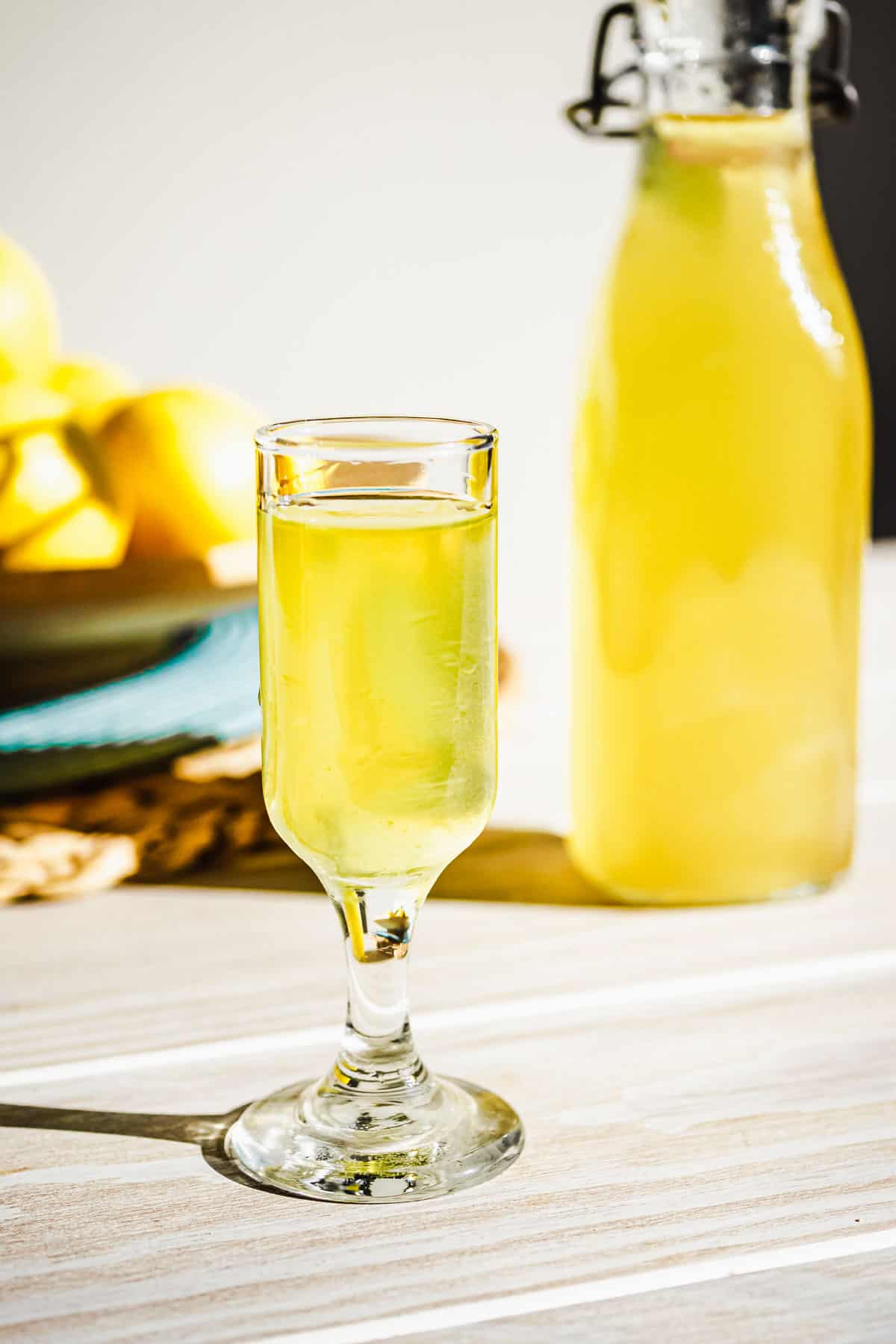
Italy, especially the Amalfi coast, is known for its fragrant lemons. They adorn ceramics and frescoes, and they’re the key ingredient in the celebrated citrus liqueur limoncello.
Making limoncello at home only requires 3 ingredients—lemon zest, high-proof clear alcohol, and sugar. Once you’ve learned how to make limoncello, you can drink it on its own or mix it into cocktails.
Make a festive pitcher of Limoncello Spritzes for easy entertaining. It’s perfect in a pre-dinner drink for a seafood meal like this Greek-Style Roasted Branzino or set it out with different mixers at your next cocktail party with finger foods.
Table of Contents
What is Limoncello?
Limoncello is a sweet, strong lemon liqueur made in Southern Italy where citrus trees thrive. In Italy, Limoncello is a regional specialty product and must be made from Sorrento lemons that haven’t been treated with pesticides.
Italy has many traditions that span centuries, but limoncello as a commercial product is actually a modern invention. Massimo Canale registered the first trademark for limoncello in 1988, the product based on his grandmother’s recipe.
But prior to that, there are plenty of stories of its manufacture by nuns, monks, innkeepers, and others over centuries. It’s likely that many people were taking lemons and infusing them in liquor as a way of preserving the fruit. Those limoncello recipes were passed down through generations.
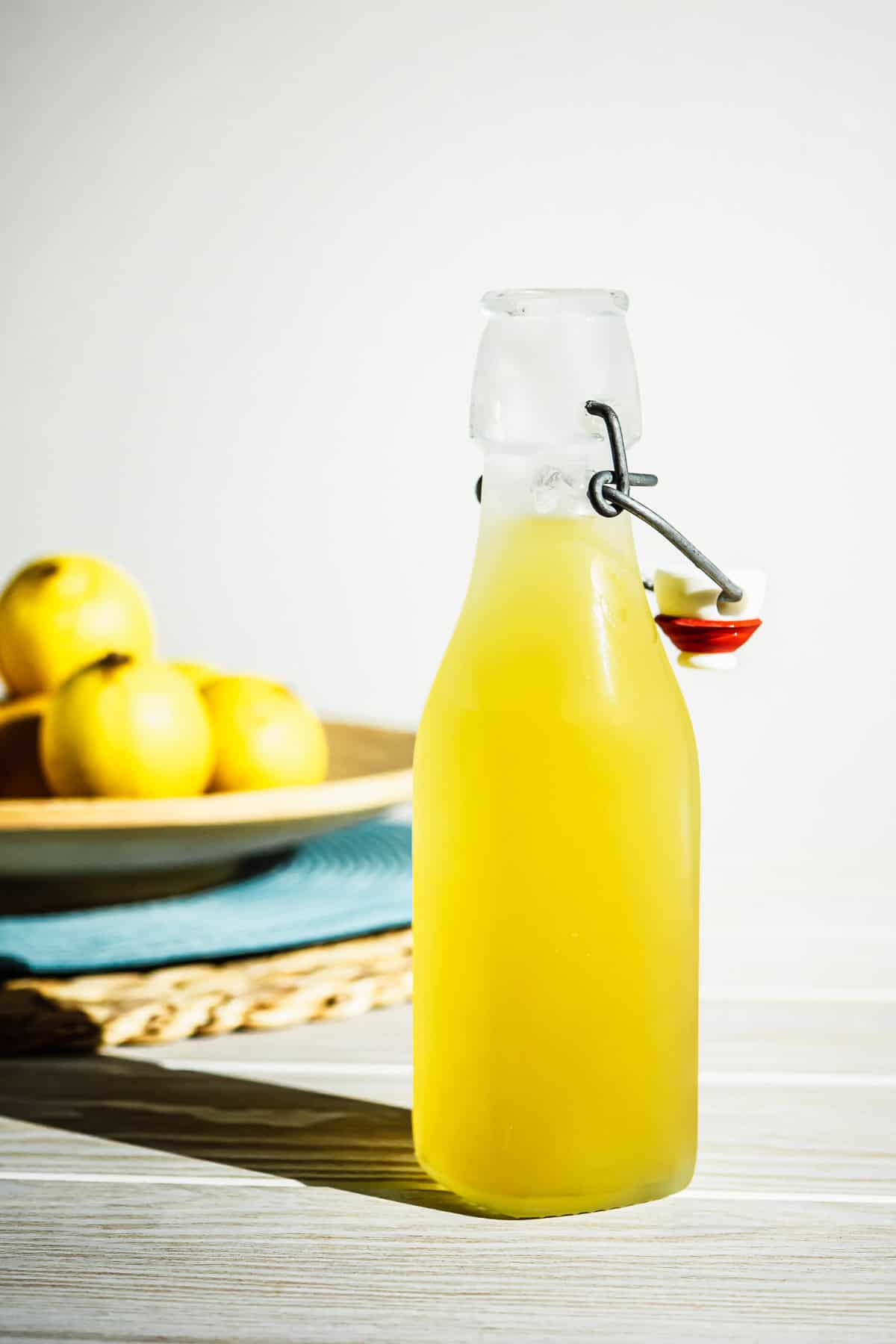
Ingredients for Limoncello
Even if a trip to the Amalfi coast is not in your near future, you can make your own limoncello at home with grocery store lemons! As with any recipe with a short ingredient list the quality of the ingredients matter the most. Here’s everything you’ll need:
- Lemon zest is what gives limoncello its yellow-gold hue and its signature lemon flavor. Because this limoncello recipe uses only the zest of the lemon, it’s best to use organic lemons. Juice the remaining fruit to make a Lemon Tart, Mint Lemonade, or Lemon Sorbetto!
- High–proof grain alcohol: The base spirit for limoncello can be any clear, high-proof grain alcohol. I recommend Everclear 190 or 151, Stoli 100 proof, and Absolut 100 proof. Any type of 100-proof vodka is fine. The high alcohol content extracts more flavor from the lemon zest than a lower-proof spirit would, and because you’ll eventually be diluting it with sugar and water, which will bring down the overall proof of the drink, it helps to start with high-proof options.
- Sugar: Adding a simple syrup of basic white granulated sugar and water to the lemon-infused alcohol gives limoncello its signature sweetness and soft texture, which is what makes it a lemon liqueur and not just a lemon-infused vodka.
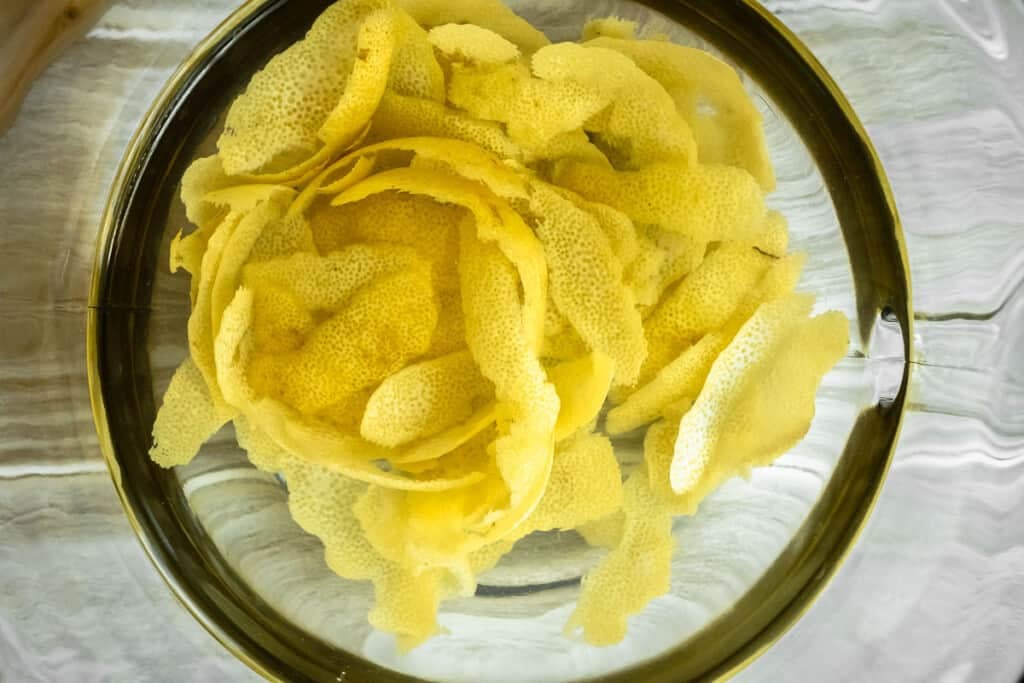
How to Make Limoncello
Making infusions like homemade limoncello are relatively easy, as you just combine the ingredients in a jar and let them rest, then add some sweetener. The process does take some time; here it is start to finish:
- Zest the lemons: Wash and dry 2 pounds (about 8 or 9) organic lemons. Use a zester or a sharp vegetable peeler to remove only the yellow zest, avoiding the white pith.
- Combine the lemon zest and liquor: Combine the lemon zest and 1 (750ml) bottle Everclear or 100-proof vodka in a glass jar. Seal it and store it out of direct sunlight.
- Infuse the liquor: Gently swirl or shake the mixture every few days for two weeks. If using a lower proof alcohol, continue to infuse the mixture for three weeks. It’s ready when the pieces of zest appear pale and the liquor has taken on a yellow color and a pronounced lemon aroma. It will have a bright, tangy lemon flavor that shines through, prevailing over the taste of the alcohol.
- Strain: Line a fine mesh strainer with cheesecloth or a nut milk bag, and pour the mixture through it into a bowl. Gently press the solids to extract any extra liquid, then discard them and set the liquid aside.
- Make the simple syrup: In a small saucepan, combine 1 cup sugar and 1 cup water over medium heat. Stir until the sugar has dissolved and remove from heat. Cool the syrup to room temperature, and then mix it into the strained liquor.
- Bottle, store, and serve: Using a funnel, pour the limoncello into swing-top bottles. Seal them and transfer to the freezer for storage. To enjoy, pour 1 1/2 to 2 ounces straight from the freezer into a chilled glass. The alcohol won’t freeze solid.
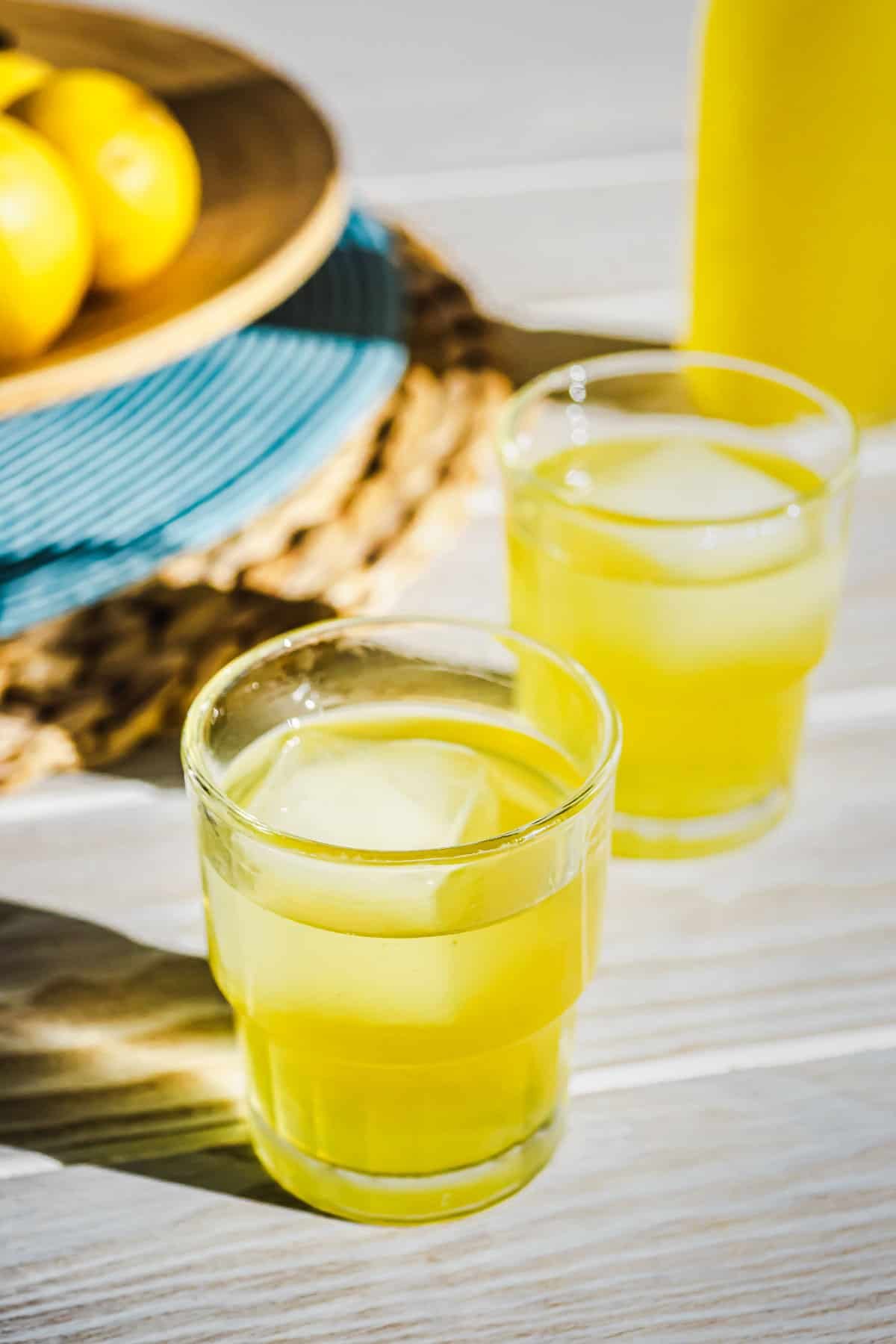
Limoncello Tips
Making limoncello is such a simple process, but there are a few technical points to keep in mind:
- How to wash citrus: When buying lemons from the grocery store scrub them well under warm water to remove any food-grade wax. If you have a lemon tree (lucky you!) or access to unwaxed lemons just rinse them to remove any dirt.
- Skip the pith: When zesting your lemons, avoid the white pith of the lemon peel; it is bitter and will impart a bitter taste to the final product. It’s best to use just the outermost layer of yellow zest.
- Go big or small: You can zest lemons for limoncello in wide strips (using a vegetable peeler), in small curls (using a citrus zester), or in fine confetti (using a microplane). I prefer to use a microplane to create a fine zest, but really it’s up to you. Using a peeler makes it possible to strain the mixture without using cheesecloth or nut milk bags.
- Keep checking it: The length of time needed to make the Limoncello can vary depending on the oil content of your lemons, as well as the proof of your liquor. Using a lower-proof vodka will mean that you may need an additional week or more to reach maximum lemon flavor.
- Strain it well: You’ll want to remove all of the particles out of the infused liquor before adding the simple syrup. A nut milk bag, or “strainer bag” is a first rate, one piece tool to use for straining fine particles. They’re great to have around: I use mine for these types of infusions, but also for straining my almond milk, chicken stock — you name it.
- Keep it cold. I find it’s best to store limoncello in the freezer so it’s ice cold and ready to serve.
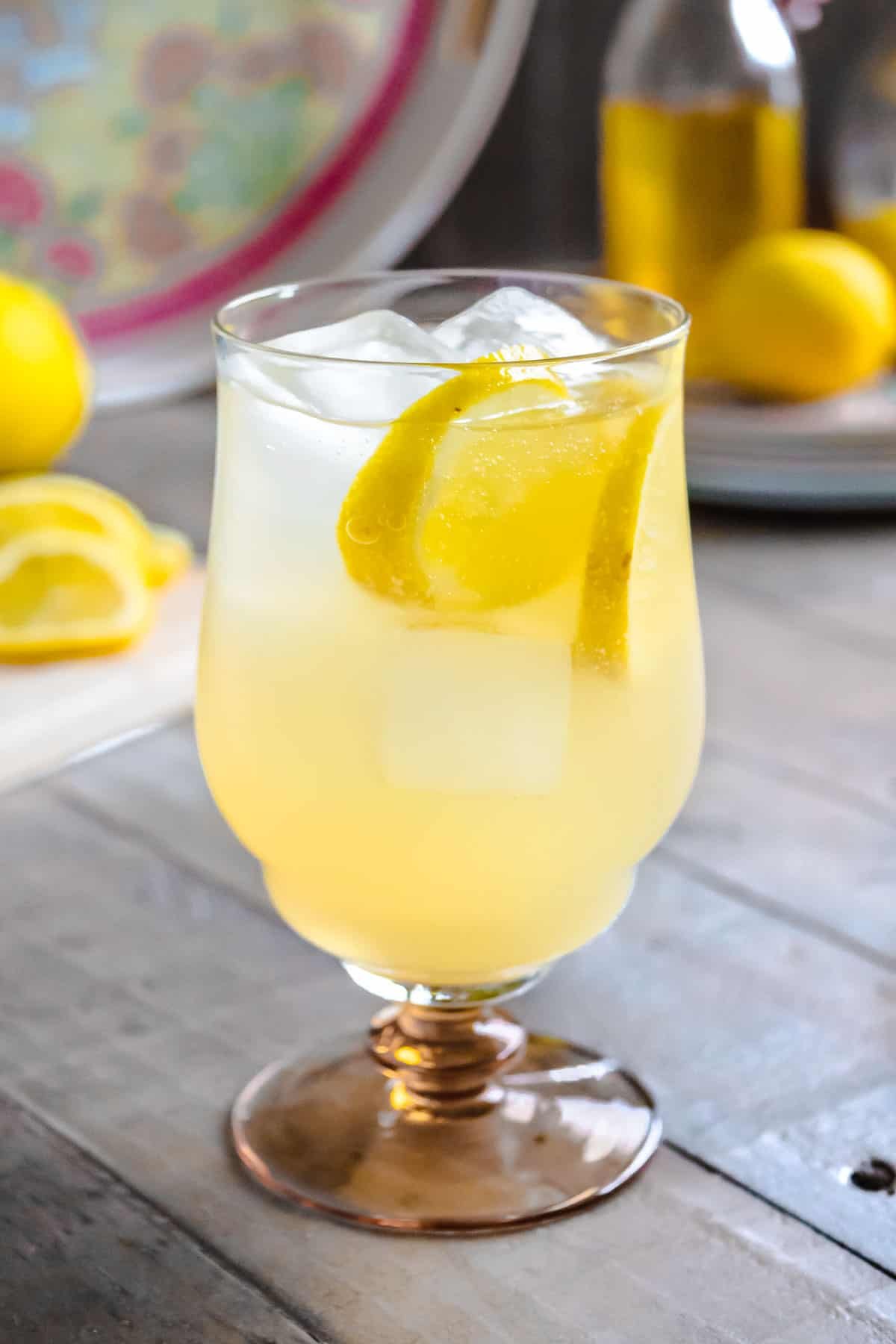
The Best Lemons for Limoncello
As mentioned, it’s best to buy organic or no-spray lemons for making limoncello. Here are some other factors to consider when choosing citrus:
- Eureka lemons, the type you’ll find year-round in North American grocery stores, have thick skin that is easy to zest without taking too much of the white pith with it.
- Meyer lemons are a great choice for limoncello due to their highly aromatic nature, which comes from the oils in the skin that infuse into the alcohol. The skins of Meyer lemons are very thin, however, and can be cumbersome to zest without tearing the peel. Using a serrated peeler makes it easier!
- Switch it up: You can also use this same recipe to make infusions with other types of citrus such as oranges, grapefruit, tangerines, limes, or even blood oranges.
How to Drink Limoncello
Once you’ve made this limoncello recipe is best to serve the finished product ice cold in small chilled glasses. Because it’s made using high-proof liquor you can store it in the freezer and it won’t freeze solid. Here are a few ways I like to use it:
- Pour as a digestif (drunk after a meal) or anytime you fancy a refreshing, sweet-tart drink. Cordial glasses are perfect for this.
- Make a limoncello cocktail! Mix a Limoncello Spritz or add an ounce of limoncello to a flute of sparkling wine for a simple festive drink. Or just mix it with sparkling water in a rocks glass.
- Use it to make Limoncello Cake, or fold some into heavy whipping cream.
- Pour some into a decorative swing-top bottle with a label and you’ve got a wonderful handmade host gift. You could even attach a pour spout from the shop.
More Refreshing Drink Recipes
Browse all Mediterranean recipes.
Visit Our Shop.
Limoncello Recipe
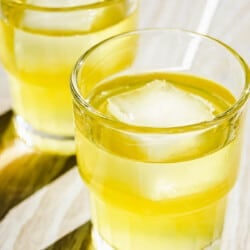
Equipment
- Fine strainer, cheesecloth, or strainer bag
- Funnel
Ingredients
- 2 pounds (about 8 or 9) organic lemons, scrubbed
- 1 750ml bottle Everclear, or high-proof vodka such as Stoli 100
- 1 cup sugar
- 1 cup water
Instructions
- Zest the lemons: Wash and dry 2 pounds (about 8 or 9) organic lemons. Use a microplane zester or a sharp vegetable peeler to remove only the yellow zest, avoiding the white pith.
- Combine the lemon zest and liquor: Combine the lemon peels and 1 (750ml) bottle Everclear or 100-proof vodka in a glass jar. Seal it and store it out of direct sunlight.
- Infuse the liquor: Gently swirl or shake the mixture every few days for two weeks. If using a lower proof alcohol, continue to infuse the mixture for three weeks. It’s ready when the pieces of zest appear pale and the liquor has taken on a yellow color and a pronounced lemon aroma. It will have a bright, tangy lemon flavor that shines through, prevailing over the taste of the alcohol.
- Strain: Line a fine mesh strainer with cheesecloth or a nut milk bag, and pour the mixture through it into a bowl. Gently press the solids to extract any extra liquid, then discard them and set the liquid aside.
- Make the simple syrup: In a small saucepan, combine 1 cup sugar and 1 cup water over medium heat. Stir until the sugar has dissolved and remove from heat. Cool the syrup to room temperature, and then mix it into the strained liquor.
- Bottle, store, and serve: Using a funnel, pour the Limoncello into swing-top bottles. Seal them and transfer to the freezer for storage. To enjoy, pour 1 1/2 to 2 ounces straight from the freezer into a chilled glass.
Notes
- Visit our shop to browse quality Mediterranean ingredients including olive oils, spices, and more.

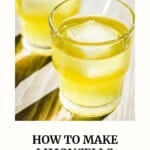
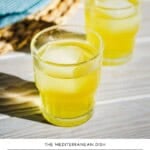
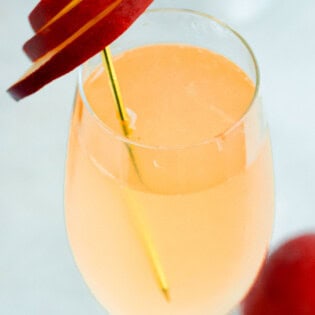
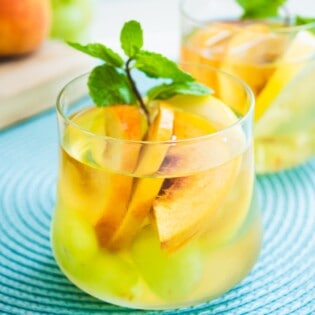
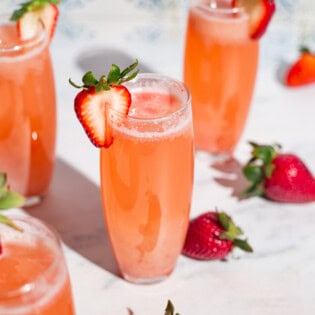
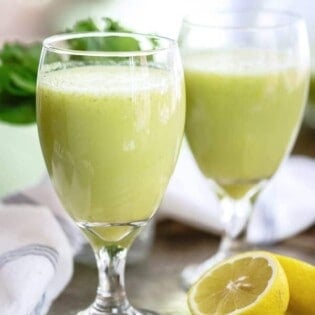
Easy to follow recipe. Can Monk Fruit be used as a sugar substitute? Thank you!
Hi, Esther! Thank you so much for the great review. Unfortunately, we’ve never tried this one with a sugar substitute, so it’s hard to say. It may work with some adjustments.
Easy recipe with many great tips. Since I’ve always found limoncello a bit too sweet for me, I made it with 3/4 the sugar, and it’s still plenty sweet enough. Made with 189 proof Everclear, it packs a wallop. Great stuff. Thank you for the recipe.
Thanks so much for taking the time to leave a review, Cary!
Can you substitute a non-alcoholic liquid in place of the Prosecco?
Hi, Beebee. I think you’re referring to our limoncello spritz recipe. If you’d like to make that without prosecco, you could just add more club soda in it’s place. Remember, though, that limoncello also contains alchohol.
I made this for friends last holiday season. One man of Italian decent said it tasted just like his grandfathers’. I felt this was a true compliment. We compared the homemade to a store bought brand and thought the lemon taste was stronger and therefore better. I chose this recipe because it sounded the most thought out. I will make it again when lemons are in season again. It was hard to find lemons without wax.
That was a true compliment!! So glad this was a hit for you, Beth!
Can I make this now and save for gift giving around the holidays? Store in fridge?
Hi, Donna. Although limoncello can have a longer life when frozen, if you’re going to be giving it as a gift for the holidays, I would err on the side of caution (and freshness) and make it when we’re a little closer.
I made this using Everclear 190 proof. It has a beautiful lemon color and when we made it we made sure that the lemons had little to no pith. The issue is that that it’s a little bitter and definitely strong. It taste better after sitting on ice and diluting it. Any suggestions to make it taste better? I’ve read a little bit of salt will counteract the bitterness but I’m not 100% sure. I’m thinking it needs more simple syrup. I’d appreciate your feedback. Thanks
Hi, T! I’m Summer and I work here at The Mediterranean Dish. I reached out to the writer to ask her for some tips and insight on this recipe. This is what she had to say, “Any pith in there could contribute to bitterness, even a small amount can impart that taste. Yes, a pinch of salt could help, but also, if they find it too strong and not sweet enough, which Limoncello isn’t necessarily that sweet, they could do a 1 cup water and 1/2 cup sugar to make a syrup in addition to what’s in the recipe to dilute further and impart more sweetness to the recipe. Using 190 proof is *very* strong, and that’s probably why they like the drink better after it’s been diluted while sitting in ice. Also, the longer it sits the more I find the flavors to mellow. They don’t say how new their batch is, so that can have an impact on taste as well.
I hope this helps. Please let us know if you need any additional information or support.
rather than zest all those lemons, I discovered dehydrated lemon zest. I was wondering how much of that I would have to use in place of fresh.
Hi, Karen. Unfortunately, we don’t have any experience with dehydrated lemon zest, so it’s hard to recommend an amount here. If you give it a try, though, we’d love to hear your thoughts!